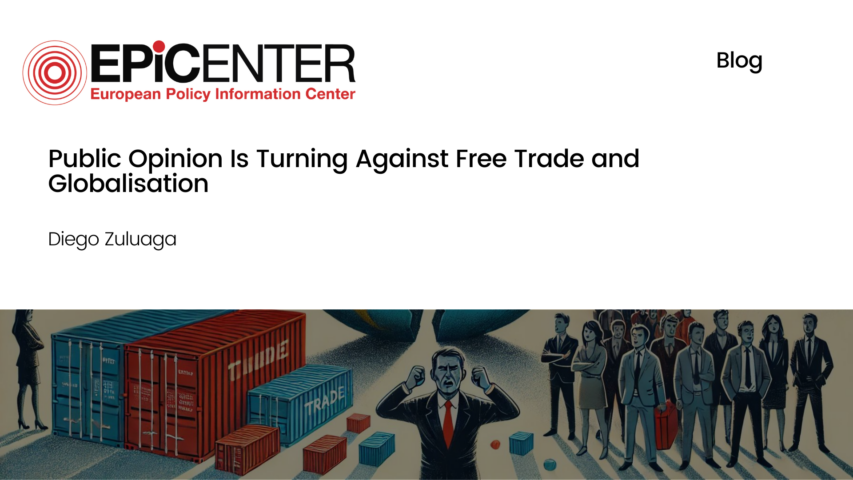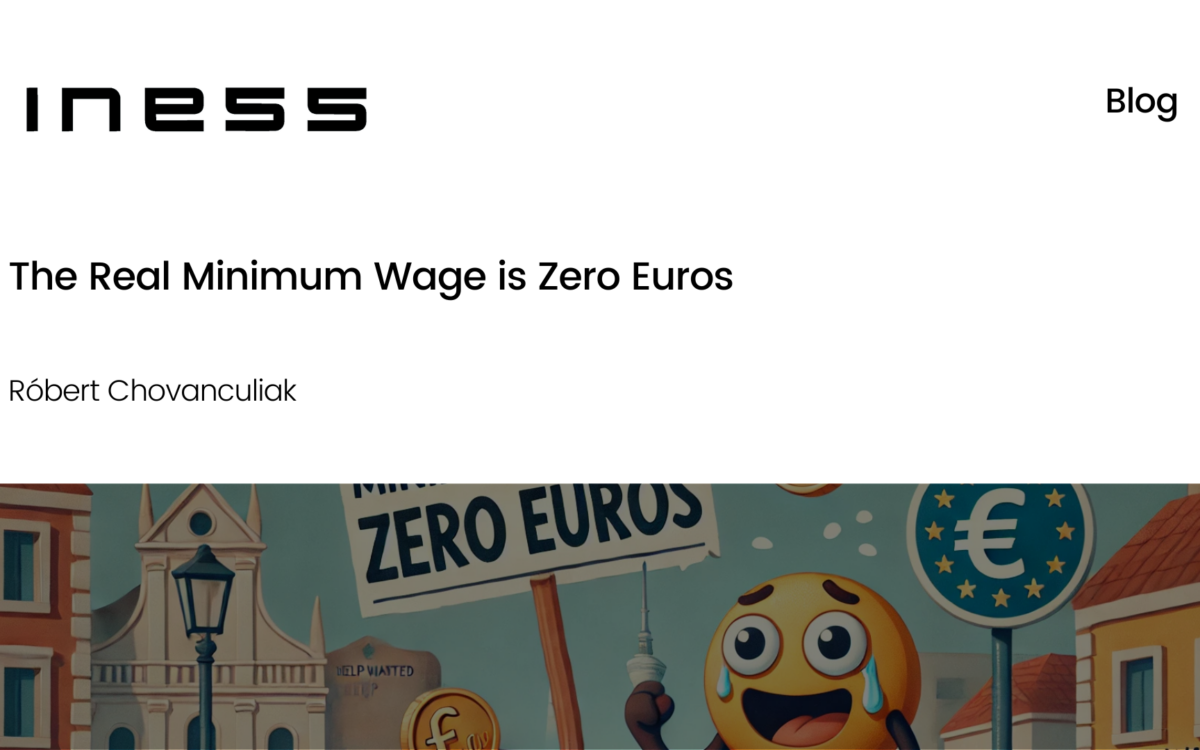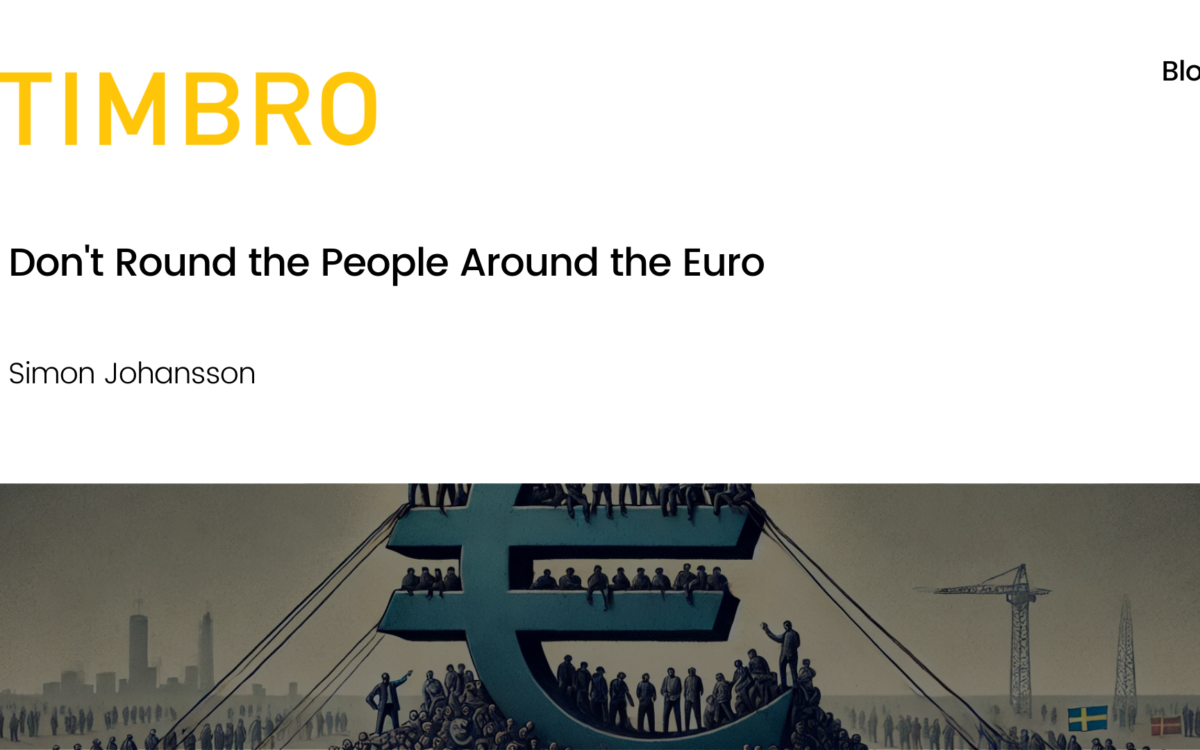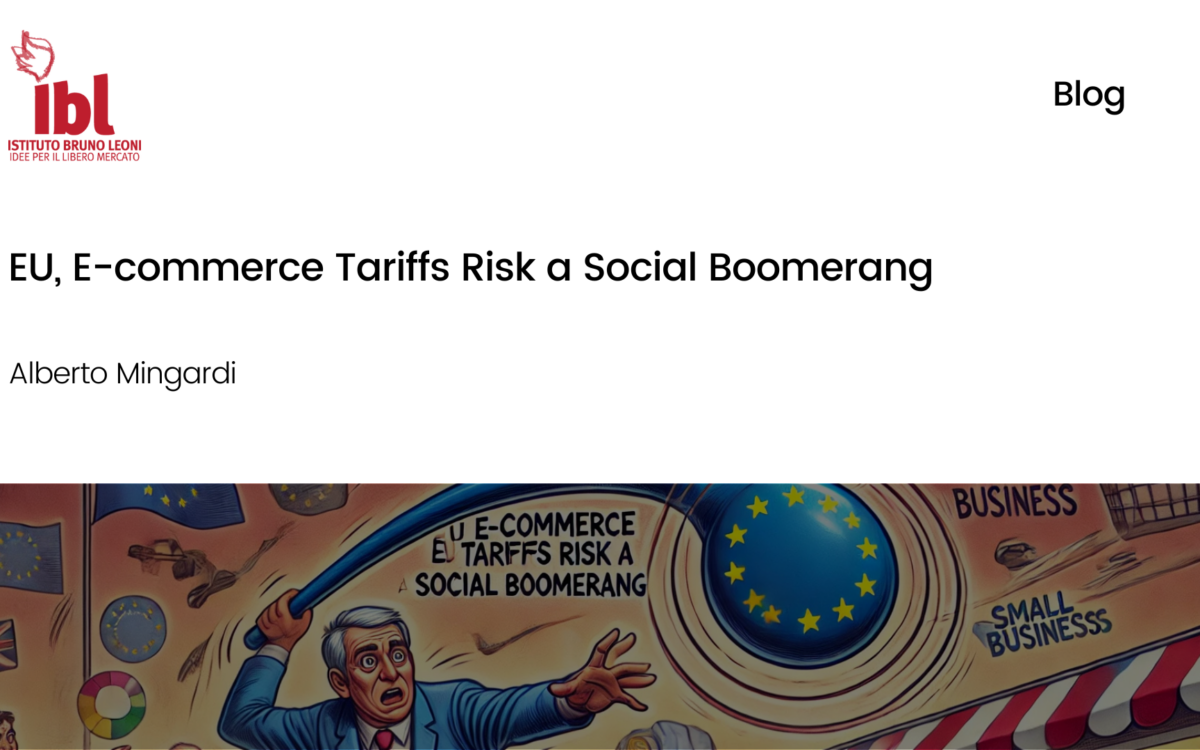Public Opinion Is Turning Against Free Trade and Globalisation

Public Opinion Is Turning Against Free Trade and Globalisation
Diego Zuluaga // 05.07.2016
This article is based on a presentation delivered at the Restructuring of the Global Economy (ROGE) conference, Oxford University.
It is a pleasure to address this conference on the Restructuring of the Global Economy. It is a timely and important topic indeed. The world economy is undergoing a large degree of restructuring as a result of both the rise of China and other emerging markets, and in the wake of the 2008 financial crisis.
However, I am not sure that the current direction of change is a desirable one. Across the world, there are signs that the globalist consensus around free trade and open markets is unravelling, not least in the two places which were central in creating such a consensus: Europe and the United States. We should be concerned: free trade has been responsible for a large proportion of the dramatic drop in poverty rates across the world in the last fifty years. A return to protectionism would slow down the economic development of the poorest countries, and make us all worse off in the process. We have been there before – and it didn’t look pretty.
Together with technical innovation, free trade is one of the key drivers of rising productivity and resource efficiency, helping to increase living standards. As economists identified long ago, freedom of exchange within and between countries enables people to focus on their comparative advantage, and to buy the rest from others. Free trade makes the sort of specialisation possible which led Adam Smith to marvel at the efficiency of his proverbial pin factory. Crucially, free exchange gives consumers greater choice at lower cost than any other alternative.
It should not come as a surprise, then, that the rise of international trade is, historically, very strongly correlated with growing incomes. Consider the share of world trade – imports plus exports – in world GDP from 1500 to the present time. The first thing that becomes apparent is a dramatic speeding up of the rate of growth in world trade beginning in 1800, and especially in the second half of the 19th century. This period was marked by the repeal of the Corn Laws in 1846, which inaugurated seven decades of global free trade underwritten by Britain, the leading economic power of the age.
Now consider real GDP per capita in Europe, the United States, and other regions and countries going back to 1600. Income per capita stayed constant for the two-and-a-half centuries until 1850, but from then on, there was perceptible growth at an accelerating rate. GDP per head in Western Europe jumped from $1,000 in 1825 to $22,000 in 2008. In the U.S., real income per capita grew 30-fold over the same period. Not 100 per cent, not 200 per cent, but 3,000 per cent.
Let’s consider for a moment the economic transformation experienced by Western countries in the last period of globalisation before the current one. That is, the period between the repeal of the Corn Laws and the start of World War I. Between 1870 and 1913, national income per head doubled in France, Germany and the USA. The UK, starting from a higher base, saw a two-thirds increase, while Spain, which was lagging behind while its peers modernised, experienced a smaller but still perceptible 50 per cent jump.
The second half of the nineteenth century was defined by open borders for goods, capital and people. In addition to the free flow of capital, goods and raw materials around the world, the age was characterised by free movement. 40 million Europeans took advantage of open borders to settle in the New World and power the economic development of the United States, Canada, Argentina and Mexico, among others. The wealthy also got around, able for the first time to travel hassle-free to distant corners of the world. The combination of free trade and free movement meant that, as Keynes described it, the comparably well-off had access “at a low cost and with the least trouble, [to] conveniences, comforts and amenities beyond the compass of the […] most powerful monarchs of other ages.” Most noteworthy, perhaps, is that – as Keynes notes – this was seen as the “normal, certain, and permanent” state of affairs.
With living standards increasing across the board thanks to free trade and free movement, the globalising period between 1850 and 1913 was a good time to be alive when compared to what had come before. But it was cut short by an event which – as Keynes’ quote implies – few could have expected and even fewer could have predicted: World War I.
The Great War not only pitted the powers of Europe against one another, leading to a death toll of 17 million. It also put a swift end to free trade and open borders across the world. The old order would not be restored at the end of the war. Trade volumes ceased to grow from 1914 and became much more volatile after 1919. The onset of the Great Depression from 1930 then led to a drop in world trade. Part of this decline was due to slowing economic activity in North America and Western Europe, but rising protectionism played a critical role.
The United States kicked off the race with the passing of the Smoot-Hawley Tariff Act in 1930, which raised import prices for over 20,000 goods to record levels. America’s most important trade partners – including Canada, France and Britain – retaliated with tariffs of their own. Germany pursued a course of autarky, or economic self-sufficiency, especially after the coming to power of Hitler’s National Socialists. Before anyone noticed, the old free-trade order had unraveled.
But the 1930s were not only a time of economic malaise and rising input prices. The decade was also marked by growing political instability within and between countries. And, while many factors were at play in the increasing tensions, one should not discount the role played by protectionism. We should remember that protectionism is the economic branch of nationalism: it aims, above all, to shield domestic industries and workers from foreign competition, even at the expense of consumer welfare.
Protectionism replaced the old win-win understanding of free trade with a zero-sum mentality which viewed a competitor country’s loss of export markets as the importing country’s gain. The economists who warned that making one’s own production costs higher could never be the source of greater prosperity were ignored. What is more, Germany’s autarkic model seemed to vindicate the Nazis’ expansionist ambitions. After all, if Germany was not to import anything from abroad, it would need to ensure there was plentiful domestic supply of labour and raw materials.
The consequences of the policy mistakes of the 1920s and 1930s would be enormous and long-standing, as we know. When it came to free trade, the world would never be the same again. And it would take until the 1960s to consistently surpass the pre-WWI high water mark of global trade volumes. The revival of open trade was spearheaded by the world’s new economic powerhouse, the United States, through international institutions such as the World Bank, the IMF and, most importantly, the General Agreement on Tariffs and Trade, or GATT.
This was a very different model from nineteenth century free trade. The emphasis was no longer on the freedom of individuals and businesses to deal with one another regardless of location. Rather, the new system was predicated on reciprocal and gradual reductions in tariff rates among the participating countries, with a view to creating the incentives for countries to become steadily more open. It was not free trade, at least not as Keynes had known it, but managed trade. Managed, that is, by national governments and multilateral bodies.
Furthermore, the new system fostered the free movement of goods and, gradually, capital and services as well. But not people. While trade openness and financial integration have by now returned to the levels seen at the turn of the 20th century, international migration still lags behind.
Nevertheless, the progressive but continuous liberalisation of world trade did usher in a new wave of globalisation. And if the previous wave had mainly centred around Europe and North America, its successor has had formerly poor and peripheral countries at its focus. Especially from the mid-1970s, countries in Latin America, East Asia and – later – South Asia and Africa began not only to open up to foreign trade and investment, but also to reform their economies in a liberalising way. Capital controls were removed, industrial subsidies phased out, taxes and red tape slashed and private property encouraged. In tandem, internal and external liberalisation have allowed these places to move from poor to developing to middle-income, and beyond.
With some variation, it is clear that there is a positive relationship between trade openness and per capita GDP. To the extent that countries become more open to foreign trade, they tend to thrive. And if they do not meaningfully open up – as in the case of Ghana – they do not. Of course, other factors matter: rule of law; a business climate which favours entrepreneurship, investment and competition; reasonably good school and healthcare systems. But one would be hard-pressed to point to any country which has noticeably improved the living conditions of its people without being open to trade with others.
The latest wave of globalisation has not only been a time of rising absolute living standards for the world’s poorest, but – perhaps counterintuitively – also of decreasing global inequality. At a time when the policy debate often obsesses over the gap between rich and poor in Western countries, we fail to recognise the great strides made at a global level to make deprivation history. That in turn has resulted in a more equal distribution of incomes. The world as a whole is much richer today than it was in 1820, or even in 1929. But incomes are also more equally distributed than at any time since industrialisation took off.
One cannot discuss the process and consequences of recent globalisation without talking about China. Both because of the scale of its population and the dramatic economic changes it has witnessed in such a short period of time, the People’s Republic captures and symbolises – more than any other place – the transformative power of open markets and international trade. Just consider the fact that, in 1981 – right at the start of its market reforms – 81 per cent of China’s people lived in extreme poverty. 30 years later, the world’s most populous country had cut its poverty rate to 12 per cent, faster than anyone else. This reduction is equivalent to 700 million people lifted out of poverty – at a time when the Chinese population grew from 900 million to 1.4 billion.
It is not just China. India has seen poverty decline and real incomes soar since it introduced cautious but important market reforms in 1991. The parts of Latin America which have embraced foreign investment and private enterprise have also made much progress, even as their more statist neighbours – who, as in the case of Venezuela, are richer in natural resources – have regressed. Even sub-Saharan Africa, long the orphan child of global development, appears to be taking off for good.
Yet, despite these unambiguously auspicious developments, public policy has of late been shifting against trade and globalisation. Worryingly, the sources of this new protectionist countercurrent are the same ones that gave birth to the globalist consensus: America and Europe. As we approach the November U.S. presidential elections, we should be concerned that the candidates from both main parties are campaigning on platforms which are more sceptical of international trade than any administration since at least the 1930s.
In Europe, the pendulum shift may be less apparent, but it is equally impactful. Witness the demise of the TTIP negotiations for a transatlantic trade deal. Consider the overwhelming consensus in the European Parliament and national capitals to deny China market economy status. And ponder the rise of stridently anti-immigration and anti-trade parties, such as France’s Front National on the Right, and Spain’s Podemos on the Left. There can be little doubt that the public mood, on both sides of the Atlantic and at all levels of government, is steadily moving against global trade, not in favour of it.
What explains the rebirth of protectionism in the West? There are likely many factors behind it, but arguably the most prominent are the protracted weakness of Western economies eight years after the financial crisis; ongoing deindustrialisation across much of Europe and the United States; slower wage growth than the twentieth-century trend; heightened perceptions of income and wealth inequality within countries; and anxiety over technological and economic change at an ever faster pace.
So, what does a protectionist agenda look like in the twenty-first century? Crude tariffs and quotas are no longer the preferred tool, not least because membership of the World Trade Organization constrains their use. Instead, protectionist measures are often concealed as regulations for the good of consumers and workers. Thus we have some European governments intervening against large tech firms, ostensibly to prevent anti-competitive practices by budding monopolies. In reality, calls for regulatory intervention are often motivated by efforts to shield domestic incumbents from competitive pressure by a disruptive sector which is overwhelmingly American.
Similarly, there are calls to slap severe import tariffs on Chinese steel, which is allegedly ‘dumped’ on Western shores by state-backed steel firms. What is missing from these arguments is the realisation that China’s subsidy policy is paid for by Chinese taxpayers, and that any punitive tariffs will be paid for by Western consumers and producers who use steel as an input.
More generally, there is – especially in the wake of the 2008 crisis – a growing international agenda to harmonise or equalise large portions of government policy, not least corporate taxation and financial regulation. To the extent that international cooperation of this sort facilitates the movement of capital and international trade, such cooperation is desirable. But when it is focused on pre-empting regulatory competition between governments, it will – as in every instance where there is an absence of competition – result in worse outcomes and reduced accountability. Moreover, harmonisation by definition magnifies the potential losses from regulatory mistakes.
The point of this discussion is not to give a gloomy view of the prospects for the global economy. The world is today a much better place – richer, healthier and longer-lived – than at any time in our history. For the first time ever, the extreme poverty rate dropped below 10 per cent of the world population in 2015, and both past experience and technological innovations suggest the trend of betterment is set to continue in the future. But without the beneficial force of open trade and globalisation, the task of growing prosperity for everyone – particularly the world’s poorest – will be made all the more difficult. Right now, a broadly peaceful and increasingly prosperous world may seem – again in the words of Keynes – the “normal, certain, and permanent” state of affairs. But we should heed history’s warning that things can quickly, and unexpectedly, turn for the worse.
Diego Zuluaga is Head of Research at EPICENTER. This article was originally published on the IEA blog.
EPICENTER publications and contributions from our member think tanks are designed to promote the discussion of economic issues and the role of markets in solving economic and social problems. As with all EPICENTER publications, the views expressed here are those of the author and not EPICENTER or its member think tanks (which have no corporate view).



